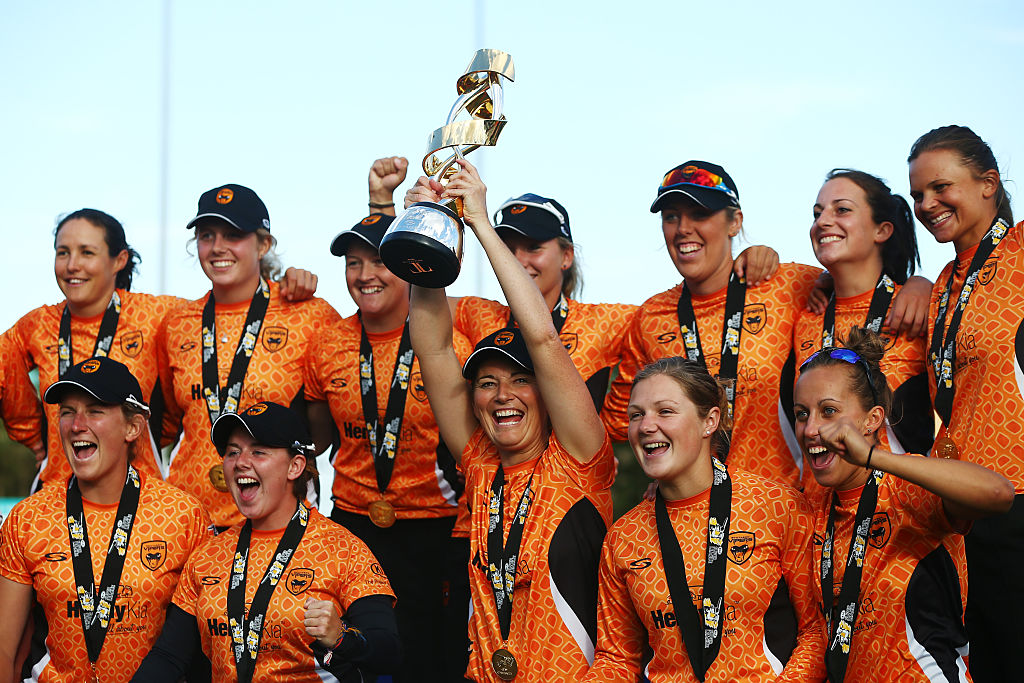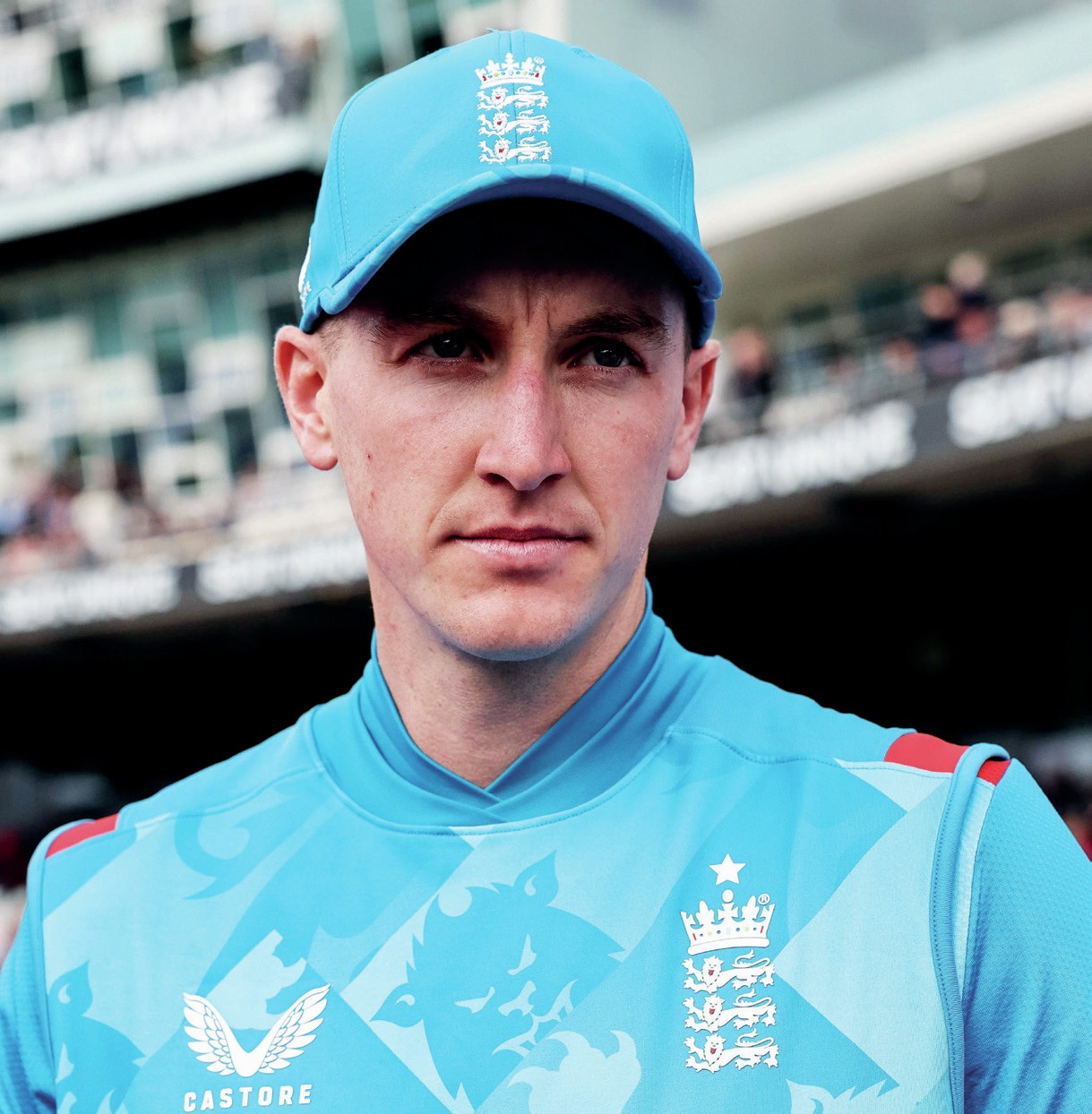
(Photo by Shaun Botterill/Getty Images)
Alison Mitchell regrets that women’s T20 league was introduced in low-key style…
There’s a lot to be said for the power of success and the creation of recognisable heroes. In the wake of England’s victorious Women’s World Cup campaign, the ECB have been able to announce an extension of their highlights deal with Channel 5, to tell the story of every England women’s home international for the next two seasons until BBC TV picks up the mantle as part of the new rights deal from 2020.
Record viewing figures and sell-out at Lord’s for the triumph of Heather Knight’s side has demonstrated an audience appetite for top level women’s cricket. It means in terms of free-to-air exposure, the highlights on terrestrial television will add to the online video clips which already appear on the BBC Sport website, app and social media platforms when matches are televised by Sky.
After the excitement of the World Cup win, the build-up to the second edition of the Kia Super League, which got underway yesterday, felt a little quiet. Illness prevented me from attending the season launch party at a trendy City of London table tennis bar, but those who were there reported that it was a very low-key drinks gathering, with just a smattering of players in attendance. Admittedly there were only a handful of journalists as well, so we must all hold our hands up there. The timing wasn’t ideal, coming only three days after the World Cup final; England players were shattered and trying to grab a breather, while media outlets had already had an abundance of access to the star women cricketers in the preceding few days.
A week later might have worked better, allowing the World Cup to be digested, before giving a week’s build-up to the start of what is now the premier women’s domestic competition. The ECB weren’t to know, however, that England would win the World Cup, and indeed do so in such headline grabbing fashion.
The KSL, won in its inaugural year by Southern Vipers, is an increasingly important competition for the sustained profile of the game. With no England matches at home now until next summer, the KSL is the vehicle to carry the momentum and interest forward from the World Cup. This is why I was disappointed to hear the launch event be described as “slightly apologetic”. The branding for the KSL is sassy and bold, so I had hoped the launch would be a loud and proud event, giving a striking introduction to the tournament.
The second edition of the KSL ought to have the same sort of self-confidence that was projected by the ICC Women’s World Cup; posters for which carried the cheeky question “who runs the world?” The ECB website and social media channels are carrying a number of funky and upbeat digital media promos for the tournament but this now all needs to translate into numbers that turn out to watch, helped by proactive marketing campaigns at the 13 venues and assisted by the wider coverage this year on BBC Radio, BBC Online and Sky Sports.
With ticket prices starting at just £1 for children and £5 for adults (or a family of two adults and two U17s for £10) it is a highly affordable afternoon or evening out. Last year, average attendance at group matches was in excess of 1,000. This ought to increase.
Some games, however, are double headers with men’s T20 Blast games and spectators can only watch the women’s T20 if they have bought the more expensive ticket for the men’s. It will be interesting to observe how much appetite the average supporter of the T20 Blast has for two matches back-to-back. Is the KSL better served by marketing itself to the very core of fans – many of them young and new – that became engrossed in the World Cup and the sensational sell-out at Lord’s?

More success to come: England skipper Heather Knight plays for Western Storm (Photo by Shaun Botterill/Getty Images)
Women’s T20 internationals have been a great success when played as standalone matches in grounds of 5,000-6,000 capacity and marketed in their own right. The hope is, I suppose, that if a few hundred Blast fans catch part of a KSL game for the first time as part of a double header, they may be tempted to pop along to a standalone game another time.
The aim next season should be to do away with double headers and for KSL games to have established their own niche.
What direction will the KSL go in future? The tournament will become more meaty next season, with the number of group matches doubling from 5 to 10 in 2018, however the proposed plan to introduce a 50-over KSL for this season has been postponed. At a time when the standard and level of competitiveness in domestic 50-over cricket needs to improve to build on the World Cup win, this needs to be the next development in a rapidly evolving landscape. England and Lancashire Thunder bowler Kate Cross is certainly worried that the 50-over version hasn’t yet happened.
“Personally I was really disappointed with that,” she told me on the BBC’s Test Match Special. “There is still a big gap between county and the Kia Super League. T20 is a big part of the cricket world at the moment, but 50-over cricket is still as important. I don’t think the county standard is good enough yet to propel people towards international cricket.”
The financial commitment to the T20 has increased this year, though. Last year, KSL players only earned fees if they actually played in matches. This season each of the non-England contracted and non-international players are being paid a tournament fee to go towards training, travel and taking time off work in order to take part. Development takes time, but it is happening.
IF you’ve ever felt like a cricket fan without a voice, or wanted to have a say but never been a member of a county club, the new Cricket Supporters Association could be for you.
The CSA is an independent and non-commercial organisation set up to represent the views of cricket fans on any number of issues to the ECB and others running the game. It has been established this summer and is operating initially as a fans forum via the website www.cricketsupporters.com and the twitter handle @yourcricketsa. They are starting by asking all fans to fill out an online survey to give them a body of information about people’s opinions on the game and the way they interact with it.
“It’s just giving people one place they can go to give a fan’s view point,” explains co-founder Becky Fairlie-Clarke, an ardent cricket fan who used to be involved in PR for the Barmy Army.
“Cricket faces so many challenges,” she says. “There’s this whole big group of people who love the game, spend their money on the game, spend their time watching the game, and yet decisions are made and they’re not asked about it. It feels like there’s a bit of a disconnect.”
The burning question for any supporters group, is whether anyone in power will actually listen. Key stakeholders are often cited as rights holders, sponsors, players and county clubs. However, there are a great number of people who would call themselves cricket fans, without being a member of a county club.
Think of those who want to watch women’s cricket and the KSL for example – particularly the new fans attracted by the Women’s World Cup win. The future fans of the new men’s T20 city tournament will similarly be drawn from a much wider demographic than at present, and are unlikely to have their voice represented by a county. This is where the CSA could come into its own. As long as the ECB are prepared to listen.


County Championships
And we’re off! The 2025 County Championship season begins



County Championships
County Championship 2025: Somerset Season Preview



County Championships
County Championship 2025: Hampshire Season Preview



County Championships
County Championship 2025: Essex Season Preview












